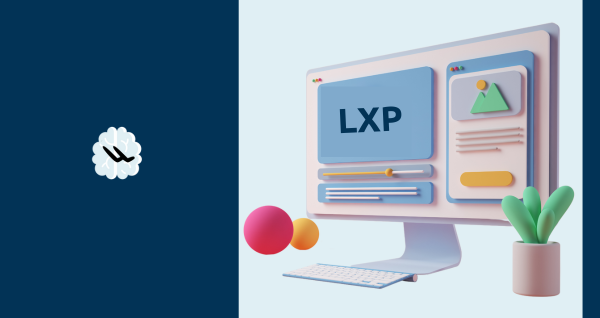
Artikel
14
september
Corporate training with an LXP: What you need to know
Corporate training with a Learning Experience Platform (LXP) such as LiveLearn has become increasingly popular as organizations seek more efficient and engaging ways to upskill their employees. LXPs are designed to deliver personalized learning experiences, foster collaboration, and track progress. Here’s what you need to know about using an LXP for corporate training.
1.Understanding LXPs
An LXP is a digital platform designed to deliver, manage, and track learning experiences for employees. It’s different from a Learning Management System (LMS) as it focuses on the learner’s experience and engagement.
2.Personalization
LXPs are known for their ability to provide personalized learning paths. They use algorithms and user data to recommend content and courses that are relevant to each individual’s needs and goals.
3.Content Aggregation
LXPs often allow organizations to aggregate content from various sources, such as e-learning courses, videos, documents, and web content, into a single platform. This makes it easier for employees to access a wide range of learning materials.
4. User Generated Content
Some LXPs enable users to create and share their own content, fostering a sense of collaboration and knowledge sharing among employees.
5.Social Learning Features
LXPs often incorporate social features, like discussion forums, chat, and collaborative projects, to encourage interaction and peer-to-peer learning.
6. Analytics and Reporting
LXPs provide detailed analytics and reporting on learner progress, engagement, and course effectiveness. This data helps organizations assess the impact of their training programs.
7. Mobile Accessibility
Many LXPs are mobile-friendly or offer dedicated mobile apps, ensuring that employees can access training content on their preferred devices, including smartphones and tablets.
8. Integration
LXPs can integrate with other HR and training systems, such as HRIS (Human Resource Information System) and performance management software, to streamline data sharing and reporting.
9. Content Curation
LXP administrators can curate and organize learning content to create structured learning paths or curriculum, making it easier for employees to navigate and achieve their learning objectives.
10. User Engagement Strategies
To maximize the benefits of an LXP, organizations should develop user engagement strategies. Encourage employees to actively use the platform and participate in discussions, forums, and collaborative activities.
11. Feedback and Iteration
Regularly gather feedback from learners to understand their needs and preferences. Use this input to iterate and improve the learning experience continuously.
12. Security and Compliance
Ensure that your LXP complies with security and data privacy regulations, especially if you’re handling sensitive employee data and training content.
13. Cost and ROI
Consider the costs associated with implementing and maintaining an LXP and weigh them against the expected return on investment. Calculate ROI based on improved employee performance and reduced training costs.
14. Change Management
Implementing a new LXP may require a change management strategy to ensure a smooth transition and adoption by employees.
15.Scalability
Choose an LXP that can grow with your organization’s needs. It should be able to accommodate an increasing number of users and content as your training program expands.
Incorporating an LXP into your corporate training strategy can enhance learning experiences, improve employee skills, and boost overall productivity. However, successful implementation requires careful planning, ongoing evaluation, and a focus on user engagement.
What's your reaction ?
Follow us on Social Media
Some Categories
Recent posts

April 26, 2024
Aandachtspunten bij een geldlening tussen een ouder en een kind

April 26, 2024
Hoe gaat u de zorg organiseren en wat zijn de kosten?

April 26, 2024
Wonen met zorg: de belangrijkste aandachtspunten op een rij

April 26, 2024
Hoe werkt u als dga aan een zorgeloze financiële toekomst?

April 26, 2024
Belastingvrij schenken in 2024

 Inloggen
Inloggen
 Registreren
Registreren






Comments (0)
No reviews found
Add Comment